Why Are Indonesia's Manufacturers Replacing Manual Handling with Pallet Inverters?
Are your operational costs climbing while efficiency seems to be hitting a wall? Many factory owners I speak with face this daily struggle. They see their teams working hard, but the process of moving goods from one pallet to another remains a major bottleneck. It's slow, it's risky for workers, and every time a product is dropped, it's money straight out of your pocket. This problem is especially sharp in rapidly growing manufacturing hubs. I've seen a clear solution emerge that is transforming warehouses and production lines. It's a strategic shift away from manual labor towards smart automation, and it’s a change you can't afford to ignore.
Indonesian manufacturers are replacing manual handling with pallet inverters primarily to increase operational speed, enhance worker safety, and reduce product damage. This automation allows them to handle goods much faster, swapping a pallet in under two minutes, a task that could take a team of workers up to 30 minutes manually. By removing the need for heavy lifting and re-stacking, they significantly lower the risk of workplace injuries. This also protects their products from being dropped or mishandled, which cuts down on costly waste and improves the quality of goods destined for both domestic and international markets.
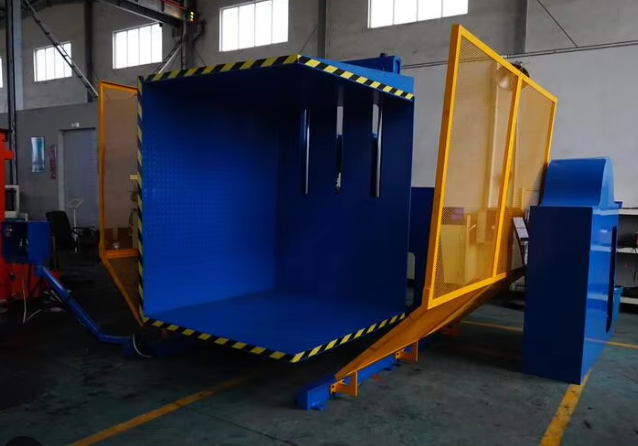
This trend isn't just a local phenomenon in Indonesia. It's a blueprint for efficiency that leaders in industrial sectors worldwide, from Mexico to Europe, are watching closely. The challenges of rising labor costs, the need for higher throughput, and stricter safety standards are universal. In my journey from engineer to factory owner, I learned that the smartest investments are the ones that solve multiple problems at once. A pallet inverter is exactly that type of investment. Let's dive deeper into the specific reasons why this technology is becoming essential and how it can be a game-changer for your own operations.
How Do Pallet Inverters Directly Reduce Operational Costs?
You watch your balance sheet closely. You know that every dollar saved on operations goes directly to your bottom line. But hidden costs, like slow manual processes and accidental product damage, can eat away at your profits without you even realizing the full extent. Imagine your team spending half an hour to manually transfer a heavy load from a production pallet to a shipping pallet. Now imagine a product slipping and crashing to the floor during that process. It's a scenario that plays out too often, resulting in wasted labor, lost inventory, and potential delays. The solution lies in targeting these inefficiencies at their source with proven technology.
Pallet inverters directly reduce operational costs by minimizing the reliance on manual labor for pallet transfers, which in turn lowers wage expenses and eliminates overtime associated with slow, tedious tasks. They also drastically cut down on costs related to product damage that frequently occurs during manual re-stacking. By automating the process, a single operator can achieve what a team of workers does, but faster and with greater care for the products.
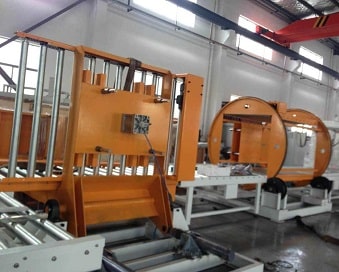
A Deeper Look at Cost Reduction
When I started my own factory, I analyzed every single step of the production and packaging process. I found that the final handling stages were often the most inefficient. This is where the value of a machine like a pallet inverter becomes crystal clear. It's not just about buying a new piece of equipment; it's about re-engineering a flawed process to unlock significant savings.
First, let's talk about labor. In many facilities, transferring goods from an in-house pallet to a shipping pallet is a team effort. You might have two, three, or even four workers dedicated to de-stacking a pallet box by box, then re-stacking it onto a new one. This is time-consuming and labor-intensive. A pallet inverter, operated by a single person with a forklift, can clamp the load, rotate it 180 degrees, and have the new pallet in place in about 90 seconds. The math is simple. You reduce the labor required for that specific task by 50-75% and free up those workers to perform other value-added tasks in your plant.
Second is the reduction in product damage. This is a huge, often underestimated, cost. Every time a human hand touches a product, there's a risk of it being dropped, dented, or scratched. With heavy or fragile goods, this risk is even higher. I've spoken with clients who were writing off thousands of dollars in damaged inventory each month simply from manual pallet transfers. The pallet inverter solves this by securing the entire load with a gentle, adjustable clamping pressure and rotating it smoothly. The product is never handled individually. This simple change can reduce product damage from handling by over 90%, turning a significant loss into a reliable profit.
| Cost Factor | Manual Handling Process | Pallet Inverter Process | Estimated Annual Savings (Example) |
|---|---|---|---|
| Labor Requirement | 2-3 Workers | 1 Operator | $45,000 (based on 2 workers' salaries) |
| Time per Pallet | 20-30 Minutes | 1-2 Minutes | Reduces bottlenecks, increases throughput |
| Product Damage Rate | 2-5% | <0.5% | $20,000 (based on product value) |
| Worker Injury Risk | High (Back strain, repetitive motion) | Very Low | Lowers insurance premiums, avoids claims |
| Total Direct Impact | High recurring operational cost | One-time investment, low running cost | >$65,000 + indirect savings |
Can Pallet Inverters Improve Workplace Safety and Address Aging Infrastructure?
As a factory owner, the safety of your people is your number one responsibility. But in an older facility with established production lines, introducing new safety measures can feel like a massive challenge. You might have aging equipment and processes that have been in place for over a decade, and the thought of a major overhaul is daunting. Back injuries from repetitive lifting are a constant worry, leading to worker downtime, increased insurance costs, and a negative impact on morale. You need a solution that not only eliminates these physical risks but can also be integrated into your existing layout without causing major disruption.
Yes, pallet inverters dramatically improve workplace safety by removing the need for any manual lifting during pallet exchange, which is a leading cause of musculoskeletal injuries in industrial environments. They are typically standalone machines that can be easily placed in an existing packaging or warehouse area. This means they can be integrated into facilities with aging infrastructure without requiring a complete redesign of the production line.
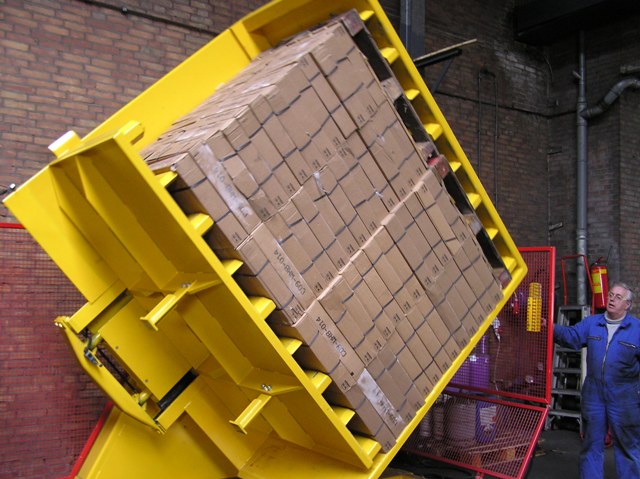
A Deeper Look at Safety and Integration
I remember walking through a client's steel processing plant years ago. The facility was over 20 years old, and while the core machinery was solid, the logistics around it were dated. I saw two men struggling to manually transfer a stack of steel plates from a heavy-duty internal pallet to a cheaper wooden one for shipping. The risk was obvious. A slip could mean a serious foot or back injury. This is the exact problem that modern equipment is designed to solve. For a leader concerned with both safety and the practicalities of an older plant, a pallet inverter is an ideal fit.
Eliminating the Root Cause of Injury
The most common workplace injuries in manufacturing and logistics are musculoskeletal disorders (MSDs), specifically strains and sprains to the back, shoulders, and arms. These are almost always caused by what safety professionals call "awkward handling"—lifting, bending, twisting, and carrying heavy loads. A pallet inverter completely eliminates this risk factor. The operator stays safely within the forklift cab or stands at a control panel. The machine does all the heavy work: clamping, lifting, and rotating loads that can weigh over two tons. By investing in this technology, you are not just preventing accidents; you are creating a fundamentally safer work process. This sends a powerful message to your team that their well-being is a top priority.
Seamless Integration into Existing Workflows
One of the biggest concerns for owners of established plants, especially those with aging infrastructure, is disruption. The idea of stopping a production line for weeks to install new, complex systems is often a non-starter. This is where the pallet inverter truly shines. Most models, including the ones we design at SHJLPACK, are self-contained units. They require a solid concrete floor and a power source, but they don't need to be physically bolted into your main production line. You can place one at the end of a conveyor, in a corner of the warehouse, or in the dispatch area. A forklift brings the load to the inverter, the pallet is swapped, and the forklift takes the load away. The rest of your operation continues without interruption. This makes it a practical, low-impact upgrade for any facility, new or old.
| Aspect | Manual Pallet Transfer | Pallet Inverter Solution |
|---|---|---|
| Ergonomic Risk | High risk of back, shoulder, and arm injuries due to lifting and twisting. | Risk is eliminated. The machine performs all physical labor. |
| Required PPE | Steel-toed boots, back support belts, gloves. | Standard warehouse PPE. No specialized gear is needed for the task itself. |
| Integration Method | N/A (Process-based) | Standalone unit. Placed in an open area, requires only power and a level floor. |
| Facility Impact | No physical impact, but high process and safety impact. | Minimal physical impact. Does not require modification of existing lines. |
| Training | Requires training on safe lifting techniques, which is often inconsistent. | Requires a short training session on machine operation, which is simple and standardized. |
What Is the Impact of Pallet Inverters on Throughput and Production Uptime?
Your plant is designed to produce. Every minute of downtime on your main production line costs you money. But a bottleneck in the final packaging or shipping stage can be just as damaging. You might have a highly efficient manufacturing process, but if finished goods start piling up because they can't be transferred to shipping pallets fast enough, the entire system grinds to a halt. This directly hurts your产能利用率 (capacity utilization rate) and makes ambitious goals, like achieving 95% equipment uptime, seem impossible. You need to clear these final-stage blockages to keep everything moving smoothly.
Pallet inverters have a massive positive impact on throughput and production uptime by transforming a slow, manual bottleneck into a fast, automated process. A pallet transfer that takes a manual team 20-30 minutes can be completed by a pallet inverter in 90 seconds. This incredible speed ensures that finished goods are cleared from the end of the line immediately, preventing backlogs and allowing the primary production machinery to operate continuously.
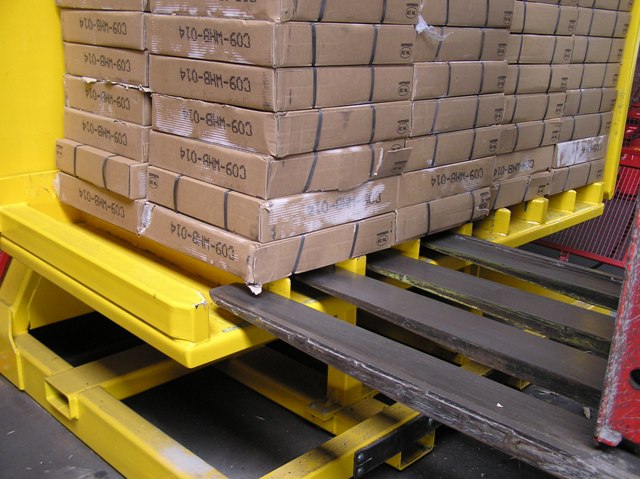
A Deeper Look at Speed and Flow
In my experience, factory managers often focus on the speed of their primary production machines, like a rolling mill or a stamping press. But I've learned that a factory's true speed is determined by its slowest point. A chain is only as strong as its weakest link. For many, that weak link is downstream in the packaging and logistics area. Addressing this is crucial for hitting high-level performance targets.
Quantifying the Speed Gain
Let's break down the time. A manual transfer requires multiple steps: a forklift brings the pallet, workers manually de-stack every item, another worker positions the new pallet, and then the team re-stacks every item. This process is variable and depends on the crew's speed and motivation. It can easily take 20 minutes or more for a standard pallet. Now consider the pallet inverter. A forklift places the pallet into the machine. The operator presses a button. The machine clamps, inverts 180 degrees, the forklift removes the old pallet and inserts the new one, and the machine rotates back. The entire cycle is consistently under two minutes. If you have 20 pallets to transfer in a shift, manual handling would take over 6 hours of labor. A pallet inverter does it in under 40 minutes. This isn't a small improvement; it's a fundamental change in your operational capacity.
The Uptime Connection
How does this relate to your 95% uptime goal? When the packaging area can't keep up, a "buffer zone" of finished goods starts to build up at the end of your production line. Once that space is full, you have no choice but to slow down or even stop production. This is forced downtime. It's not caused by a machine failure, but by a logistical failure. By installing a high-speed pallet inverter, you create a pressure-release valve. The packaging area can now handle whatever the production line outputs, in real-time. This ensures a continuous flow from raw material to finished product, helping you maximize the effective run time of your most valuable assets and making that 95% uptime target achievable.
| Metric | Manual Handling | Pallet Inverter | Impact on Uptime |
|---|---|---|---|
| Process Time / Pallet | 20-30 minutes | 1.5-2 minutes | Drastically reduces time spent on non-value-added tasks. |
| Throughput (Pallets / Hour) | 2-3 | 20-30 | Increases end-of-line capacity by 10x or more. |
| Consistency | Variable, depends on workers | Highly consistent, machine-paced | Allows for predictable planning and scheduling. |
| Bottleneck Risk | High. Easily overwhelmed by production output. | Low. Can easily keep pace with most production lines. | Eliminates forced downtime caused by packaging backlogs. |
My Perspective: Why a Pallet Inverter Is More Than a Machine—It's a Strategic Tool
As a leader, you are constantly looking at the big picture. You are not just buying a piece of steel; you are investing in a solution to a business problem. I know you face pressure from all sides—volatile costs, aging equipment, and the constant need to innovate. Just buying another machine can feel tactical, a small fix for a small problem. But after helping so many clients and building my own factory, I've come to see certain pieces of equipment differently. I see them as strategic tools. When you introduced a waste heat recovery system, you weren't just buying pipes and turbines; you were making a strategic move against energy costs. A pallet inverter should be viewed in the same light.
From my experience, the best investments are the ones that deliver value across multiple areas of the business. A pallet inverter is not just a device for swapping pallets. It is a strategic asset that simultaneously addresses your core challenges of operational cost, worker safety, production efficiency, and even quality control. It's a lever that, when pulled, provides a disproportionately large return.
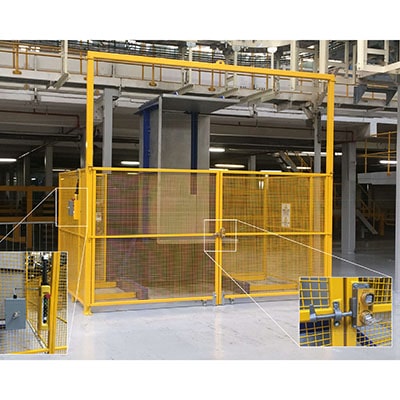
A Deeper Look from an Engineer's and Owner's Eyes
When I was an engineer on the factory floor, I saw the daily struggles firsthand. Later, as a factory owner, I had to connect those daily struggles to the numbers on a spreadsheet. This dual perspective taught me to look for solutions that work on both levels. A pallet inverter is one of those rare solutions.
You, Javier, are looking for a strategic partner, not just a supplier. I built my company, SHJLPACK, on this very principle. A supplier sells you a machine. A partner understands your goals—like reducing operating costs by 8% or hitting 95% uptime—and helps you get there. For example, we worked with a steel wire manufacturer facing similar challenges. Their main issue was product damage during the switch from sturdy in-house pallets to cheaper one-way export pallets. By analyzing their process, we didn't just sell them an inverter; we recommended a specific model with adjustable clamping pressure perfect for their coils. The result? Their product damage rate dropped to nearly zero, and the labor savings alone paid for the machine in 14 months. That's a strategic partnership.
The strategic value goes beyond just swapping pallets. Think about quality control. How do you inspect the items at the bottom of a one-ton stack? Manually, it's impossible. With an inverter, you can rotate the load, inspect the bottom layers for damage or defects, and rotate it back. Think about recovering products. If one box at the bottom of a pallet gets crushed, you can use the inverter to safely access and replace it, saving the rest of the entire load. It’s also a tool for flexibility. When market demand shifts, you need to be agile. The ability to quickly swap to different pallet types (plastic, wood, rental CHEP pallets) without disrupting your flow is a small but powerful competitive advantage.
| Strategic Goal | Tactical Problem | How a Pallet Inverter Provides a Strategic Solution |
|---|---|---|
| Reduce Operating Costs by 8% | High labor cost for manual handling; product damage. | Automates labor, cutting wage costs. Prevents damage, saving inventory. |
| Increase Uptime to 95% | Bottlenecks in the packaging area stop the main line. | Creates a high-speed exit point for finished goods, ensuring continuous flow. |
| Address Aging Equipment | Old processes are unsafe and inefficient. | Integrates easily as a standalone unit, modernizing a key process without a full overhaul. |
| Enhance Digital Transformation | Lack of data on logistics processes. | Modern inverters can be integrated with MES/IoT to track cycle times and throughput. |
| Improve Environmental Compliance | Waste from damaged goods and disposable pallets. | Reduces product waste. Facilitates easy switching to reusable rental pallets. |
Conclusion
Indonesian manufacturers show that adopting pallet inverters is a smart, strategic move. It cuts costs, boosts safety, and increases efficiency, driving real business growth and a competitive edge.



